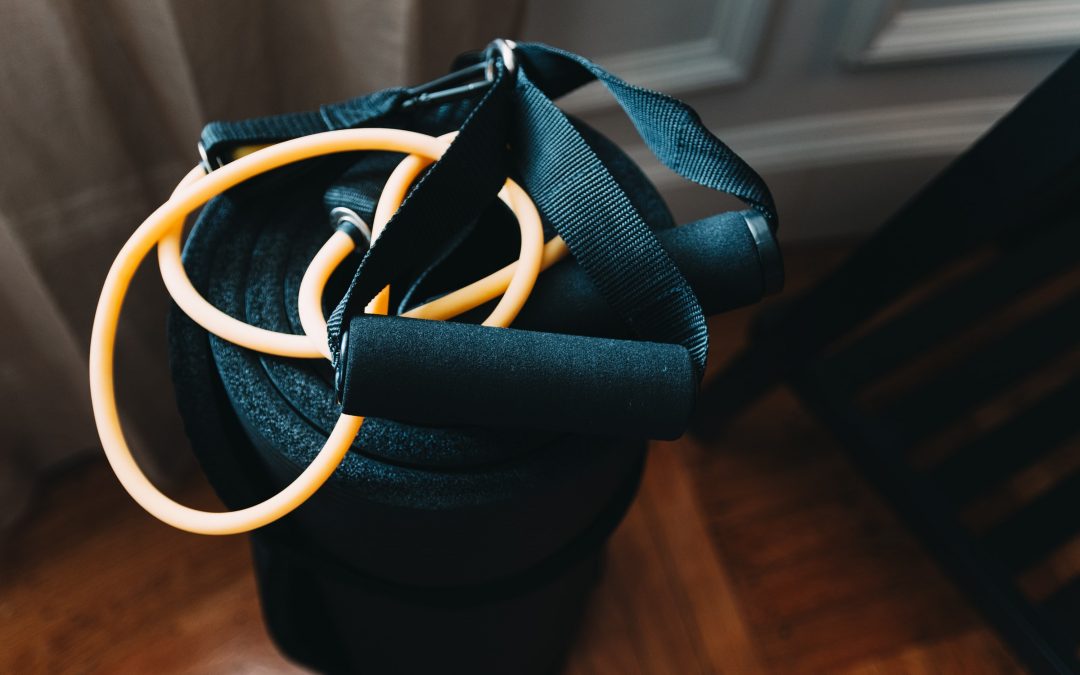Strength training can still be made easy even if you don’t have the complete equipment at home! Resistance bands are great additions to fitness routines, especially for people on the go. They are easy to bring around and make for a more effective workout. Resistance bands come in a variety of colors, lengths, strengths, and types, making them fit for anyone at any fitness level. They bring a good challenge to your workout and help build muscle strength.
Originally, resistance bands were used to help rehabilitate and improve injuries so they are commonly found in physiotherapy clinics and nursing homes. Recently though, fitness experts have also recognized they’re advantageous to the average workout. As they are flexible, they can be used for a myriad of different exercises. Your regular workout at home can become too easy in the long run, so adding these bands are a fun twist to challenge yourself!
Bands are usually color-coordinated according to their tension levels and come in different kinds which have slightly different purposes:
- Mini Bands
These are small, thin, wide bands that make continuous loops, perfect for lateral movements. They can help both the upper and lower body by placing them around the knees, ankles and even arms. These can also help with stability/balance and engage and activate the core. They are best for getting extra tension and strengthening the lower body (e.g. doing exercises like squats, lunges and even kickbacks).
- Tube Resistance Bands
These are more cylindrical bands that usually have handles attached to either end. They are made to mimic weights and some machines at the gym, essentially targeting the upper body. Great for presses, curls, and other exercises that involve pressing or pulling.
- Light Therapy Bands
These are lighter and thin bands that are longer in appearance and can be used more for therapy as they have less tension and low impact. These are more effective to use while doing the likes of Pilates and are good for muscle toning or warming up and stretching.
Advantages
- Resistance bands act like machines or weights in which they cause your muscles to work against the tension. This can be great for strengthening not only muscles but also your joints, bones, and tissues which in turn can prevent bone injuries and diseases such as osteoporosis and osteoarthritis.
- Resistance bands also cost less, so if you’re not already enrolled in a gym membership or do not have equipment that you can use at home, resistance bands are the key to getting in the effective workout with less the cost and hassle. You’ll also need less space, as resistance bands rely fully on your body weight.
- For the beginner, resistance bands come in different levels of heaviness. They usually come in sets of 3, light, medium and heavy. Starting out, you can use the lightest resistance band and gradually build up your resistance. When you’ve become accustomed to them and they start to feel too easy, you can start using the bands with heavier resistance. You can also combine different resistance bands, increasing the challenge without the strain that can potentially come from free weights. You get the same muscle activity with less risk of injury!
- Resistance bands can be added to your usual workout routine by modifying these familiar moves. Put resistance loop bands around your ankles and walk from side-to-side, or around your quads while doing exercises like squats or lunges, lateral walks or even jumping jacks with the bands around the ankle.
- Instead of relying heavily on gravity, your body is working against the weight of the band. This also means that in order to keep the band around you, your muscles are constantly working to 1.) hold the band up and 2.) defy the tension the band is giving. You can already feel the burn while you’re only holding up the position of the exercise, such as glute bridges which sound fairly easy, but not with the bands!
- With the versatility in bands, the possibilities are endless. Use them for a great warm-up by doing stretches with the bands, which help with stability. Warm-ups are already a must before workouts, but using bands can really help target weaker areas in your body that you may not know are causing other parts to compensate which can cause strains or injuries. For those that are planning on doing heavy lifting, bands can also be used to stabilize the shoulders to prepare it for a heavier free weight.
- They work areas that aren’t always targeted by exercises using weights or machines like the gluteus medius.
- You can work out your whole body and not just one area. You can work on another area while the other is recovering, and at the same time be doing moves that are working multiple parts of the body. The range of movements does also keep your heart rate up which is good for any exercise regimen.
- Resistance bands are lightweight and take up little to no space. This means you can bring them with you anywhere and use them anywhere. This is very convenient in contrast to lugging around a couple of dumbbells everywhere.
- They can correct the areas that you use to compensate, improving your overall workout because you do the range of motions working the muscles they’re supposed to instead of the ones that you use to compensate.
Safe to say that resistance bands can benefit you in a multitude of ways. As you use them, you start to see and reap the benefits, which turns workouts into something you look forward to doing.


